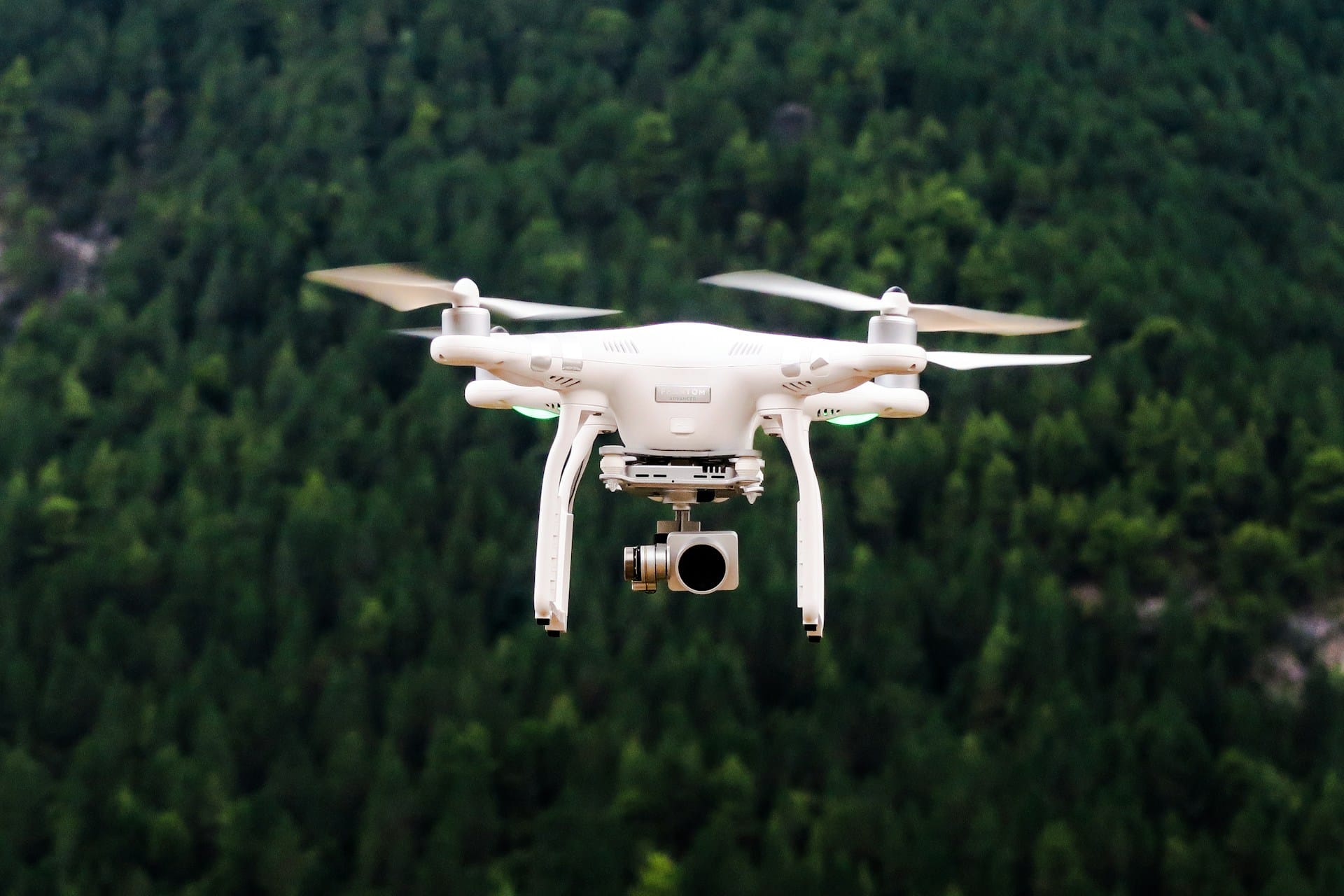How are AI-powered drones used in wildlife monitoring?

The dynamic interplay between wildlife conservation and technology finds new nuance with the advent of artificial intelligence (AI), particularly in the realm of drone usage. Drones, unmanned aerial vehicles that can be remotely controlled or run via software-controlled flight plans, have emerged as a transformative force in wildlife monitoring. These high-tech tools equipped with AI capabilities have dramatically enhanced data collection, species detection, and animal tracking, playing a pivotal role in bolstering conservation efforts.
The Integration of AI and Drone Technology in Wildlife Monitoring
The use of AI in drone technology has given a significant boost to wildlife monitoring, offering an efficient and less intrusive method of tracking and studying various species. But how exactly does this marriage of artificial intelligence and drones work? Let’s delve into the specifics.
Cela peut vous intéresser : How to use chatbots to answer FAQs ?
AI-powered drones operate on sophisticated algorithms, which enable them to identify specific patterns, behaviors, and characteristics of various animals. They can be programmed to recognize and monitor particular species, track their movements, and even detect signs of distress or abnormal behavior. This is achieved through a combination of thermal detection and motion tracking technology, which allows drones to monitor wildlife even in challenging environments or at night.
Moreover, AI in drones significantly enhances the processing and analysis of collected data. With machine learning algorithms, these drones can sift through vast amounts of data quickly and identify useful patterns or trends. This can lead to more accurate predictions about animal behavior, population dynamics, migration routes, and potential threats to their survival.
A lire en complément : What is the impact of AI on the job market?
The Role of Drones in Animal Tracking and Species Detection
Keeping track of animal movements and detecting specific species forms an integral part of wildlife conservation efforts. But these tasks can be daunting, considering the vastness of natural habitats and the often elusive nature of many wildlife species. Here’s where drones come into play.
Equipped with high-resolution cameras and thermal sensors, drones can provide detailed, real-time insights into the whereabouts and activities of various animal species. The thermal imaging capabilities of these devices enable researchers to locate and monitor animals even in low-light conditions or dense vegetation. This is particularly useful for nocturnal species or those that inhabit remote, hard-to-reach locations.
Moreover, the AI algorithms used in drones can analyze the collected data and accurately identify different species based on their physical attributes or behaviors. This automatic detection reduces the time and manual effort required to identify species, enabling researchers to focus more on data interpretation and conservation strategies.
How Drones Aid in Data Collection for Wildlife Conservation
Collecting reliable and comprehensive data is crucial to understanding wildlife populations and formulating effective conservation strategies. The role of drones in this aspect cannot be overstated.
By monitoring wildlife from a distance, drones can collect data without disturbing the animals or their habitats. They can cover large areas quickly and efficiently, capturing high-resolution images and videos that can offer invaluable insights into animal behavior, habitat conditions, and population trends.
AI technology further enhances the data collection process. With machine learning algorithms, AI-powered drones can categorize and analyze the collected data, identifying patterns and trends that might be missed by the human eye. This makes for more accurate and efficient data handling, facilitating more informed decision-making in conservation efforts.
AI Drones in Detection of Threats to Wildlife
Drones are not just used for tracking animals and collecting data, they are also instrumental in detecting potential threats to wildlife conservation. These threats can range from human intrusion and habitat destruction to signs of disease or distress within animal populations.
AI-powered drones can be programmed to identify such threats based on visual cues or changes in animal behavior. For instance, drones can use thermal imaging to detect unusual heat signatures that could indicate a forest fire. Similarly, changes in animal movement or behavior could signal a potential disease outbreak or the presence of predators or poachers.
By detecting these threats early, conservationists can take prompt action to mitigate damages and protect wildlife populations. Hence, AI drones are proving to be invaluable allies in the ongoing struggle for wildlife conservation.
AI Drones in Monitoring Endangered Species and Their Habitats
The use of AI-powered drones in wildlife monitoring extends to crucial areas like the monitoring of endangered species and their habitats. Due to their capacity for unobtrusive, real-time data collection, these aerial vehicles have become instrumental in assessing the status of at-risk populations and mapping out conservation strategies.
Drone technology enables researchers to track and monitor endangered animals without disturbing them or encroaching upon their natural habitats. Equipped with high-resolution cameras, these drones can capture detailed images and videos, providing invaluable insights into the daily activities, behaviors, and interactions of these species. Consequently, this leads to more informed decisions regarding their protection.
Moreover, AI-powered drones can assess changes in the environment that may pose a threat to endangered species. By analyzing visual data, these drones can detect signs of habitat destruction, such as deforestation, illegal hunting, or climate change impacts. This allows for timely intervention and the implementation of measures to mitigate these threats.
Machine learning algorithms used in these drones enable them to identify and monitor specific species among various animal populations. By recognizing distinct physical characteristics or behaviors, these drones can focus on endangered species and provide accurate data about their movements, population size, and habitat conditions.
Impact of AI Drones on Future Wildlife Conservation
As we can see, the role of AI-powered drones in wildlife monitoring is undeniable. Their ability to provide real-time, high-quality data in a non-intrusive manner has revolutionized wildlife conservation efforts, enabling researchers to gain a better understanding of various species and their environments.
The integration of artificial intelligence and drone technology has significantly streamlined data collection and analysis. With machine learning and computer vision capabilities, these unmanned aerial vehicles can sift through vast amounts of data quickly, identify specific patterns or trends, and make accurate predictions about animal behavior and migration routes. This has led to more efficient conservation strategies and the ability to respond rapidly to potential threats.
The use of drones in wildlife monitoring also holds great promise for the future. As technology continues to advance, we can expect drones to become even more sophisticated, with enhanced AI capabilities and more precise detection and tracking systems. This will undoubtedly lead to more comprehensive and accurate wildlife monitoring, which is crucial in our rapidly changing world.
In conclusion, the marriage of AI and drone technology has proven to be a game-changer in the realm of wildlife conservation. The ability of these drones to monitor wildlife in real time, detect specific species, track animal movements, and identify potential threats has significantly bolstered conservation efforts. As we move forward, it is clear that AI-powered drones will continue to play a pivotal role in preserving our planet’s precious wildlife.
